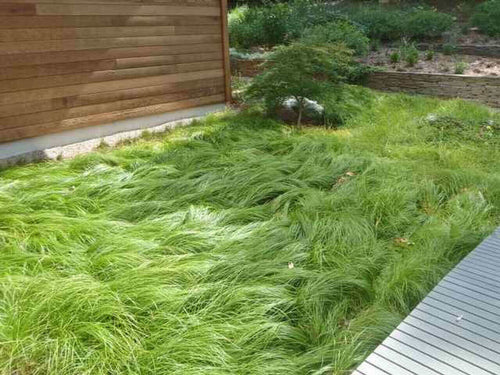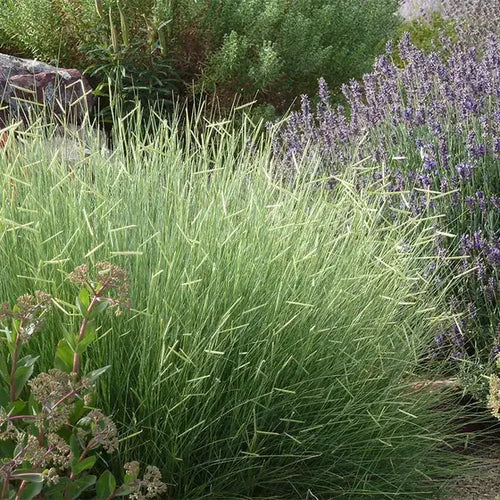The Importance and Diversity of Native Grasses
Native grasses play a crucial role in ecosystems around the world. These often underappreciated plants provide a range of ecological, economic, and cultural benefits that contribute to the health and sustainability of our planet. From their role in soil stabilization to supporting diverse wildlife habitats, native grasses have a fascinating history and continue to shape the landscapes they inhabit.
Ecological Significance
One of the most remarkable features of native grasses is their adaptability to various environments, including grasslands, prairies, savannas, and even forests. This adaptability stems from their co-evolution with local ecosystems over millions of years. Native grasses have developed unique traits that allow them to thrive in specific soil types, climate conditions, and disturbances.
Soil Stabilization and Erosion Control
One of the primary ecological roles of native grasses is soil stabilization and erosion control. The intricate root systems of these grasses help bind soil particles together, preventing erosion caused by wind and water. Their extensive root networks also enhance soil structure and promote water infiltration, reducing the risk of flooding and runoff. In areas prone to landslides or coastal erosion, native grasses contribute to slope stabilization, protecting communities and infrastructure.
Biodiversity Support
Native grasses create diverse habitats that support a wide array of wildlife. Grasslands and prairies, dominated by native grass species, are home to numerous species of insects small mammals, and reptiles. These ecosystems provide food, shelter, and nesting sites for wildlife, promoting biodiversity and contributing to the environment's overall health. In some cases, native grasses have co-evolved with specific species, forming essential relationships for survival. For example, the bobwhite quail in North America relies on native grasses like switchgrass for both habitat and food.
Fire Adaptation
Many native grasses have evolved to thrive in fire-prone environments. These grasses are adapted to tolerate periodic fires, which can clear away dead vegetation, recycle nutrients, and promote the growth of new shoots. Fire-adapted grasslands and savannas are maintained by natural fires and controlled burns conducted by land managers. This practice helps prevent the encroachment of woody plants and invasive species, supporting the native grasses and the ecosystems they sustain.
Cultural Significance
Native grasses hold cultural importance for many indigenous communities around the world. For generations, they have been used for traditional ceremonies, crafts, food, and medicine. These grasses often carry deep cultural meanings and connections to the land, preserving heritage and fostering a sense of identity.
Economic Benefits
Beyond their ecological and cultural significance, native grasses also offer economic benefits. They play a role in sustainable agriculture and ranching systems, providing forage for livestock and improving soil health. Some native grasses, like buffalo grass, require fewer inputs, such as water and fertilizer, than non-native alternatives, making them valuable for landscaping and turf management in arid regions.
Challenges and Conservation
Despite their importance, native grasses face several challenges. Habitat loss due to urbanization, agriculture expansion, and invasive species encroachment threatens many native grassland ecosystems. Fragmentation and conversion of grasslands into other land uses can disrupt wildlife habitats and reduce biodiversity. Invasive species can outcompete native grasses, altering the composition of ecosystems.
Conservation efforts are crucial to protect and restore native grass populations. Land managers, researchers, and conservation organizations work together to identify and prioritize areas for restoration, implement invasive species control, and reintroduce native grasses to degraded landscapes. Establishing protected areas, promoting sustainable land-use practices, and engaging local communities are essential to preserve native grass ecosystems.
Examples of Native Grasses
- Big Bluestem (Andropogon gerardii): Found in North American prairies, this tall grass can reach heights of 6 to 8 feet. Its deep root system makes it drought-tolerant and an essential species for stabilizing soil.
- Kangaroo Grass (Themeda triandra): Native to Australia, this grass is well-adapted to fire-prone environments. It provides food for kangaroos and other grazers, and its seeds were historically used as a food source by indigenous communities.
- Pampas Grass (Cortaderia selloana): Native to South America, pampas grass is known for its tall plumes and ornamental value in landscaping. However, it has become invasive in some regions and threatens native ecosystems.
- Indian Ricegrass (Achnatherum hymenoides): Native to western North America, indigenous communities have historically used this grass as a food source. It has a unique relationship with mycorrhizal fungi that enhances its nutrient uptake.
- Feathergrass (Stipa spp.): In various regions worldwide, feathergrasses are known for their graceful, feathery inflorescences. They have ornamental value and are often used in landscaping.
Conclusion
Native grasses are essential to diverse ecosystems, providing ecological, cultural, and economic benefits. Their adaptability, role in soil stabilization, support of biodiversity, and fire adaptation highlight their significance in maintaining healthy landscapes. However, the conservation of native grasses faces challenges such as habitat loss and invasive species. Through concerted conservation efforts and sustainable land-use practices, we can protect and restore these valuable plants, ensuring the continued health of our planet's ecosystems for generations to come.




















































